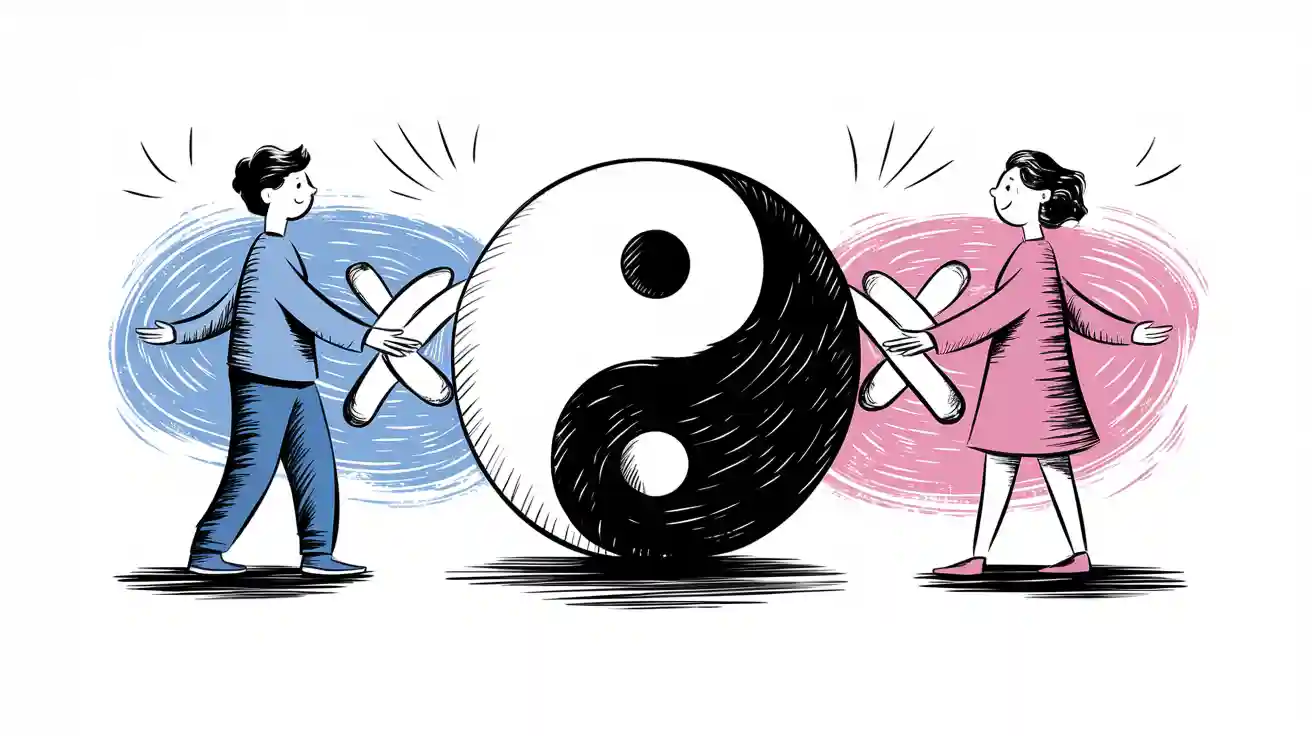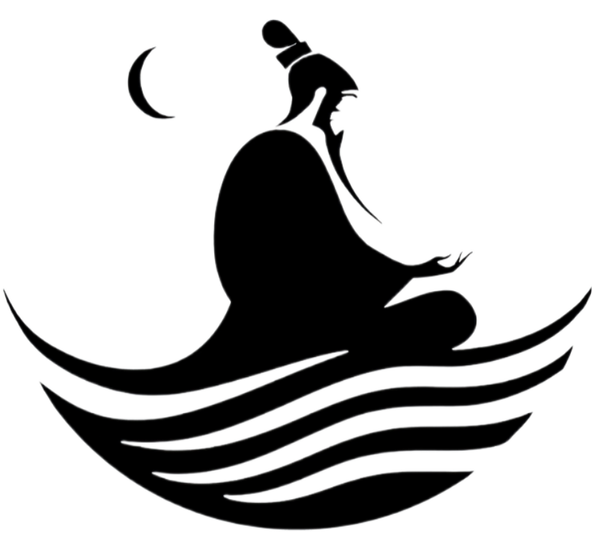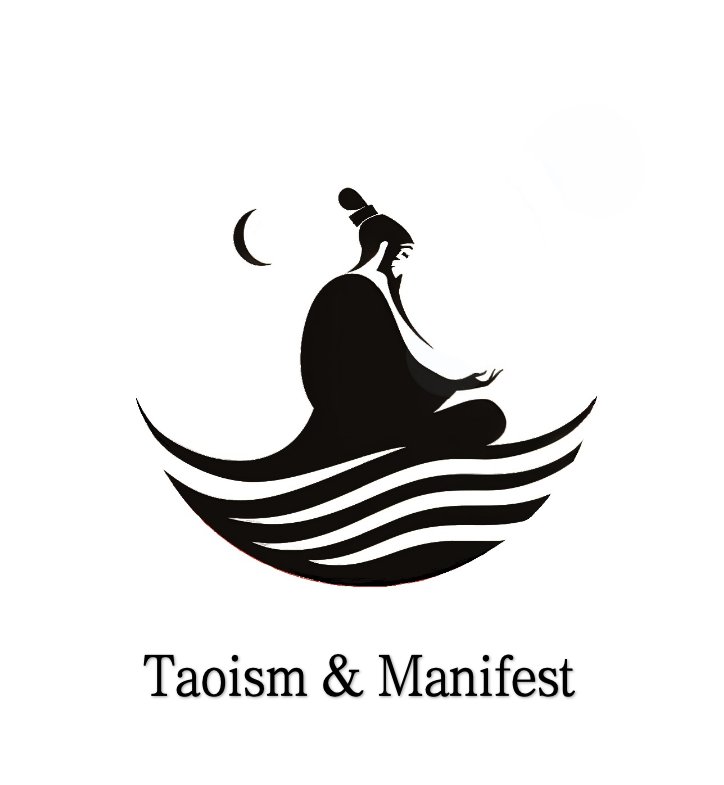
You might see people use yin-yang theory to talk about men and women. This can cause unfair ideas about gender. Yin-yang theory does not say men or women must act a certain way. It talks about balance and change in nature. If you think this theory is unfair to women or men, you are not the only one. Today, we should ask questions about old beliefs and look for fair ways to understand them.
Key Takeaways
Yin-yang theory first talked about balance and change in nature. It did not talk about set roles for men or women.
Some people made a mistake and said yin means women and yang means men. This made unfair ideas about what men and women should do.
Old ideas used yin-yang to say women could only do certain things. This hurt women and made things unfair. If we use words that include everyone, we can show yin and yang are for all people.
Learning and sharing fair ideas about yin-yang helps everyone get respect and equal treatment.
Yin-Yang Theory and Gender

Original Meaning
You may think of yin-yang theory as something about men and women, but its roots go much deeper. The original purpose of yin-yang theory was to explain how nature works in harmony. Ancient Chinese thinkers watched the world around them. They saw patterns like day and night, hot and cold, and the changing seasons. These patterns showed them that everything in nature has two sides that work together.
Here is a table that shows how yin-yang theory started as a way to describe balance in the world:
Aspect |
Evidence Summary |
|---|---|
Historical Origins |
Yin-yang theory came from watching natural events like day and night or the seasons. These show how opposite forces can work together. |
Symbolism |
The yin-yang symbol shows two halves, each with a dot of the other. This means each side needs the other to be whole. |
Philosophical Integration |
Confucianism and Taoism used yin-yang theory to talk about balance in society and nature. Taoism teaches that you should live in harmony with the world. |
Practical Applications |
People use yin-yang theory in Chinese medicine, martial arts, and art. All these areas focus on finding balance. |
Related Concepts |
The Five Phases (Wu Xing) connect to yin-yang theory. They show how things change and move in cycles. |
You can see that yin-yang theory was never about gender at first. It was about finding balance and harmony in everything.
Gender Associations
Over time, people started to link yin with female and yang with male. Early Chinese books did not talk about gender when they described yin and yang. Later, some Daoist and Confucian writers said yin means female and yang means male. They used these ideas to explain social rules and roles.
Daoist texts like the Taipingjing said “the male and female are the root of yin and yang.”
Han dynasty thinkers, such as Dong Zhongshu, matched yin with female and yang with male. They used this to support social hierarchies.
In some cases, yin and yang could switch roles, but most people saw yin as weak and yang as strong.
Medical books showed that yin and yang could change inside each person, no matter their gender.
You should know that yin-yang theory became a way to talk about gender, but this was not its original purpose. The theory can be flexible and does not have to support gender stereotypes.
Misinterpretations
Historical Misuse
You might ask why yin-yang theory got tied to gender roles. Confucian tradition helped make this happen. Early Confucian books, like the Book of Rites, made rules for men and women. These rules said men should work outside the home. Women were told to stay inside and care for the house. This idea, called "nei-wai," put men in charge in public. Women were expected to take care of the family at home. Confucian scholars, like Dong Zhongshu, used yin-yang theory to support these ideas. They said men are like yang, so they should be strong and active. Women are like yin, so they should be gentle and quiet.
The rule "husband guides wife" made the husband the boss at home, like a king leads a country. This belief gave men more power and took away choices from women.
You can see how these beliefs made yin-yang theory strict. Over time, people thought these roles were natural and could not change.
Social Impact
These wrong ideas changed people’s lives in real ways. You may have heard about the "Three Obediences and Four Virtues." This code told women to obey their fathers, husbands, and sons. It also said how women should act, like being quiet and working hard. These rules stopped women from speaking up in society.
Old family roles, based on yin-yang theory, took away women’s freedom.
Things like foot-binding and concubinage became normal because of these beliefs.
Women had fewer rights and could not get much education or join public life.
When you look at history, you see these systems used yin-yang theory to keep women in lower positions. This is why we should question old ideas and try to find fairer ways to understand them.
Preventing Gender Bias
Inclusive Language
You can help stop gender bias by choosing words that do not link yin or yang to men or women. When you talk about yin-yang theory, use terms like "soft" and "hard," "dark" and "light," or "rest" and "activity." These words describe qualities, not people. You do not have to say yin means female or yang means male. This helps everyone see that these ideas belong to all people.
Here are some ways you can use inclusive language:
Replace "yin is female" with "yin is receptive."
Replace "yang is male" with "yang is active."
Talk about traits, not gender. For example, say "a person can show both yin and yang qualities."
Tip: When you use non-binary language, you make space for everyone to see themselves in the theory.
You can also use a table to help you choose better words:
Old Phrase |
Inclusive Phrase |
|---|---|
Yin is female |
Yin is receptive |
Yang is male |
Yang is active |
Women are yin |
People have yin traits |
Men are yang |
People have yang traits |
When you use these words, you help others see that yin-yang theory is about balance, not about gender.
Education and Reflection
You can learn to spot gender bias by studying how people have used yin-yang theory in the past. When you read old texts or hear someone talk about yin and yang, ask yourself if they link these ideas to gender. If they do, think about why. Did people use these links to keep some groups in power? Did they use them to limit what others could do?
You can also reflect on your own ideas. Ask yourself:
Do I think of yin as weak and yang as strong?
Do I believe only women can be yin or only men can be yang?
Where did I learn these ideas?
Note: When you question your own beliefs, you start to see how culture shapes your thinking.
You can also help others learn. Share what you know with friends, family, or classmates. Talk about how yin-yang theory can be flexible. Show that anyone can have both yin and yang traits. When you teach others, you help break down old stereotypes.
Here is a simple checklist you can use:
Use non-gendered words when talking about yin and yang.
Ask questions about old ideas.
Share what you learn with others.
Stay open to new ways of thinking.
When you use inclusive language and keep learning, you help make yin-yang theory fair for everyone.
Inclusive Approaches

Contemporary Examples
There are many ways people use yin-yang theory today. In schools, teachers use yin-yang ideas to teach about balance. They help students learn to respect differences. Some colleges in Asia use yin-yang thinking to handle change and fix problems. At work, leaders use yin-yang to help teams work together. They also use it to solve arguments. This makes everyone feel important, no matter who they are.
Here is a table that shows how researchers and groups use yin-yang theory in different fields:
Study / Author(s) |
Sector(s) |
Key Application / Findings |
|---|---|---|
An et al. (2018) |
Education, Media |
Used yin-yang to help people from different cultures talk better in schools and media. |
Chin et al. (2020) |
Education, Business |
Made a business plan using yin-yang for better teamwork and making value. |
Li et al. (Case Study) |
Management |
Used yin-yang ideas like balance to help companies get better. |
Lee and Reade |
Leadership |
Showed that yin-yang thinking helps leaders and workers trust each other more. |
You can see yin-yang harmony in real jobs too. Companies use it to handle competition and share ideas. They also use it to help new ideas grow. Some businesses use yin-yang to help workers balance work and life. This includes working from home.
Promoting Fluidity
Yin-yang theory can help support gender fluidity and queerness. The theory says everyone has both yin and yang traits. You do not have to follow strict gender rules. You can show different sides of yourself at different times.
You can see yourself as having many traits, not just one.
You can respect people who show themselves in special ways.
You can help make places where people feel safe to be themselves.
Tip: If you use yin-yang theory in a flexible way, you help everyone feel included.
You can use this idea in schools, offices, and media. When you talk about balance and change, you show people do not have to follow old gender rules. This helps everyone feel seen and respected.
You can help create a fairer world by moving past old gender ideas. When you see balance as something everyone can share, you open new ways to think. Ask yourself how you view others. Try to use words and actions that include all people. If you keep learning and questioning, you support equality and respect in every part of life.
FAQ
What is gender bias in yin-yang theory?
Gender bias happens when people use yin-yang theory to say men and women must act in certain ways. This can lead to unfair rules or stereotypes. You can avoid this by seeing yin and yang as qualities, not as labels for gender.
What can you do if someone uses yin-yang theory to support stereotypes?
You can ask questions and share facts. Remind others that yin-yang theory started as a way to explain balance in nature, not gender roles. You can use inclusive language to help everyone feel respected.
What words should you use instead of “yin is female” or “yang is male”?
Try using words like “yin is receptive” or “yang is active.”
You can also say “people have yin and yang traits.” This helps everyone see that these qualities belong to all people, not just one gender.
What makes yin-yang theory helpful for understanding people?
Yin-yang theory shows that everyone has different sides. You can use it to understand balance in your life. You do not have to fit into strict gender roles. This helps you respect yourself and others.
What should you remember when learning about yin-yang and gender?
You should remember that yin-yang theory is about balance and change. It does not set rules for men or women. You can use it to support fairness and respect for all people.
See Also
Living in Harmony: Principles of Taoism






